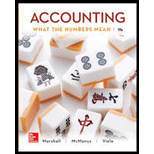
Concept Introduction:
Dividend Dividend is the reward given by the company from its residual profit to its shareholders. It can be in the form of cash or otherwise. It is given by the board of directors only after shareholder's approval through their voting rights. It is not mandatory for a company to declare dividends.
Requirement 1:
Average price at which shares were issued
Concept Introduction:
Dividend Dividend is the reward given by the company from its residual profit to its shareholders. It can be in the form of cash or otherwise. It is given by the board of directors only after shareholder's approval through their voting rights. It is not mandatory for a company to declare dividends.
Requirement 2:
The
Concept Introduction:
Dividend Dividend is the reward given by the company from its residual profit to its shareholders. It can be in the form of cash or otherwise. It is given by the board of directors only after shareholder's approval through their voting rights. It is not mandatory for a company to declare dividends.
Requirement 3:
Dividend to be paid to shareholders
Concept Introduction:
Dividend Dividend is the reward given by the company from its residual profit to its shareholders. It can be in the form of cash or otherwise. It is given by the board of directors only after shareholder's approval through their voting rights. It is not mandatory for a company to declare dividends.
Treasury shares are those shares which are bought by the company itself, thereby reducing the number of shares outstanding. These shares do not have voting rights and are not entitled for dividends.
Requirement 4
Cause of difference between issued and outstanding shares
Want to see the full answer?
Check out a sample textbook solution
Chapter 8 Solutions
Accounting: What the Numbers Mean
- I am looking for the correct answer to this general accounting question with appropriate explanations.arrow_forwardValor Systems is considering a project that will produce incremental annual sales of $320,000 and increase cash expenses by $205,000. If the project is implemented, taxes will increase from $31,000 to $37,000. The company is debt-free. What is the amount of the operating cash flow using the top-down approach? Need helparrow_forwardanswer this without using Chatgtp or AIarrow_forward
- Simba Pets uses the perpetual inventory system. At the beginning of the quarter, Simba Pets has $42,000 in inventory. During the quarter, the company purchased $9,200 of new inventory from a vendor, returned $1,500 of inventory to the vendor, and took advantage of discounts from the vendor of $300. At the end of the quarter, the balance in inventory is $34,500. What is the cost of goods sold? A. $15,500 B. $14,900 C. $13,500 D. $16,200arrow_forwardI need help solving this general accounting question with the proper methodology.arrow_forwardCan you solve this general accounting problem with appropriate steps and explanations?arrow_forward

 AccountingAccountingISBN:9781337272094Author:WARREN, Carl S., Reeve, James M., Duchac, Jonathan E.Publisher:Cengage Learning,
AccountingAccountingISBN:9781337272094Author:WARREN, Carl S., Reeve, James M., Duchac, Jonathan E.Publisher:Cengage Learning, Accounting Information SystemsAccountingISBN:9781337619202Author:Hall, James A.Publisher:Cengage Learning,
Accounting Information SystemsAccountingISBN:9781337619202Author:Hall, James A.Publisher:Cengage Learning, Horngren's Cost Accounting: A Managerial Emphasis...AccountingISBN:9780134475585Author:Srikant M. Datar, Madhav V. RajanPublisher:PEARSON
Horngren's Cost Accounting: A Managerial Emphasis...AccountingISBN:9780134475585Author:Srikant M. Datar, Madhav V. RajanPublisher:PEARSON Intermediate AccountingAccountingISBN:9781259722660Author:J. David Spiceland, Mark W. Nelson, Wayne M ThomasPublisher:McGraw-Hill Education
Intermediate AccountingAccountingISBN:9781259722660Author:J. David Spiceland, Mark W. Nelson, Wayne M ThomasPublisher:McGraw-Hill Education Financial and Managerial AccountingAccountingISBN:9781259726705Author:John J Wild, Ken W. Shaw, Barbara Chiappetta Fundamental Accounting PrinciplesPublisher:McGraw-Hill Education
Financial and Managerial AccountingAccountingISBN:9781259726705Author:John J Wild, Ken W. Shaw, Barbara Chiappetta Fundamental Accounting PrinciplesPublisher:McGraw-Hill Education





